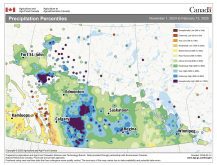Prices are expected to fall this year because of increased production, and farmers are urged to protect themselves
SAN ANTONIO, Texas — It is shaping up to be another year of slumping commodity prices, and that means growers need to properly time their sales, say analysts.
The U.S. Department of Agriculture is forecasting an average cash corn price of US$3.60 per bushel in 2020-21, down from $3.85 per bu. this year.
That is a concerning outlook, but Matt Bennett, a consultant with Channel Seed Grain Marketing, thinks it could be worse than that.
The USDA’s price forecast is based on farmers planting 94 million acres of the crop, up from 89.7 million acres last year.
Read Also

Pakistan reopens its doors to Canadian canola
Pakistan reopens its doors to Canadian canola after a three-year hiatus.
Bennett thinks that is about right, but he believes the USDA’s average yield estimate of 178.5 bushels per acre is low.
He told growers attending the 2020 Commodity Classic conference that a 180 bu. crop is in the cards if there is decent weather.
“I feel very confident it’s going to happen,” he said.
Bennett believes $3.60 per bu. is “idealistic” and that means U.S. farmers are likely going to lose money growing corn in the upcoming year.
Ed Usset, grain marketing economist with the Center for Farm Financial Management at the University of Minnesota, said that is why it is paramount that farmers sell their corn crop at the correct time.
He has gleaned a few lessons after studying 31 years of Iowa corn price data.
One lesson is that a farmer is better off pre-selling most of their corn rather than waiting until harvest to market their crop.
A grower who prices 20 percent of their corn in March, 20 percent in April, 20 percent in May, 20 percent in June and the remainder at harvest fares far better than the farmer who sells everything at harvest.
A grower using that pre-selling strategy would have earned an extra 17 cents per bu. on every bushel of corn sold over the past 31 years.
When it comes to post-harvest strategies, the grower who puts unpriced corn in the bin and holds it until the end of May also does better than the harvest-time seller.
Growers who sold 20 percent of their corn at harvest and locked the rest in the bin until May earned an extra 19 cents a bu. on every bushel sold over the last 31 years — and that is taking storage costs into account.
The May seller also fared better than the grower who holds onto his grain until a week before the new crop harvest.
Usset said corn growers are always holding out for that extra 25 cents a bu., but what happens when the market rallies 25 cents?
“What are you going to do?” he asked the farmers listening to his presentation.
“You’re going to wait for 25 cents more. This is an issue.”
Iowa corn prices peak in that May-June period and then decline.
The farmer who sells in May has outperformed the grower who waits until just before harvest by 41 cents a bu. over the past 31 years.
Growers “pay an incredibly large price” for holding onto their grain too long, which is why Usset threatened to phone growers in early July.
“I’m going to ask you to step out into the corn bin and I want to hear an echo,” he said.
















